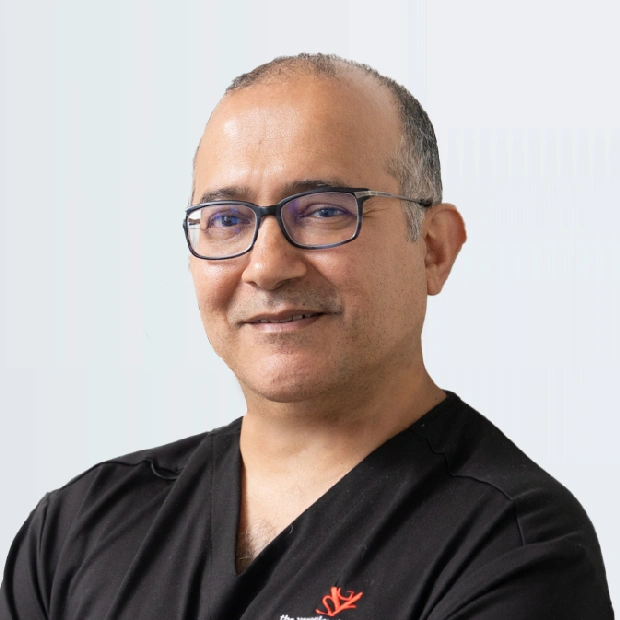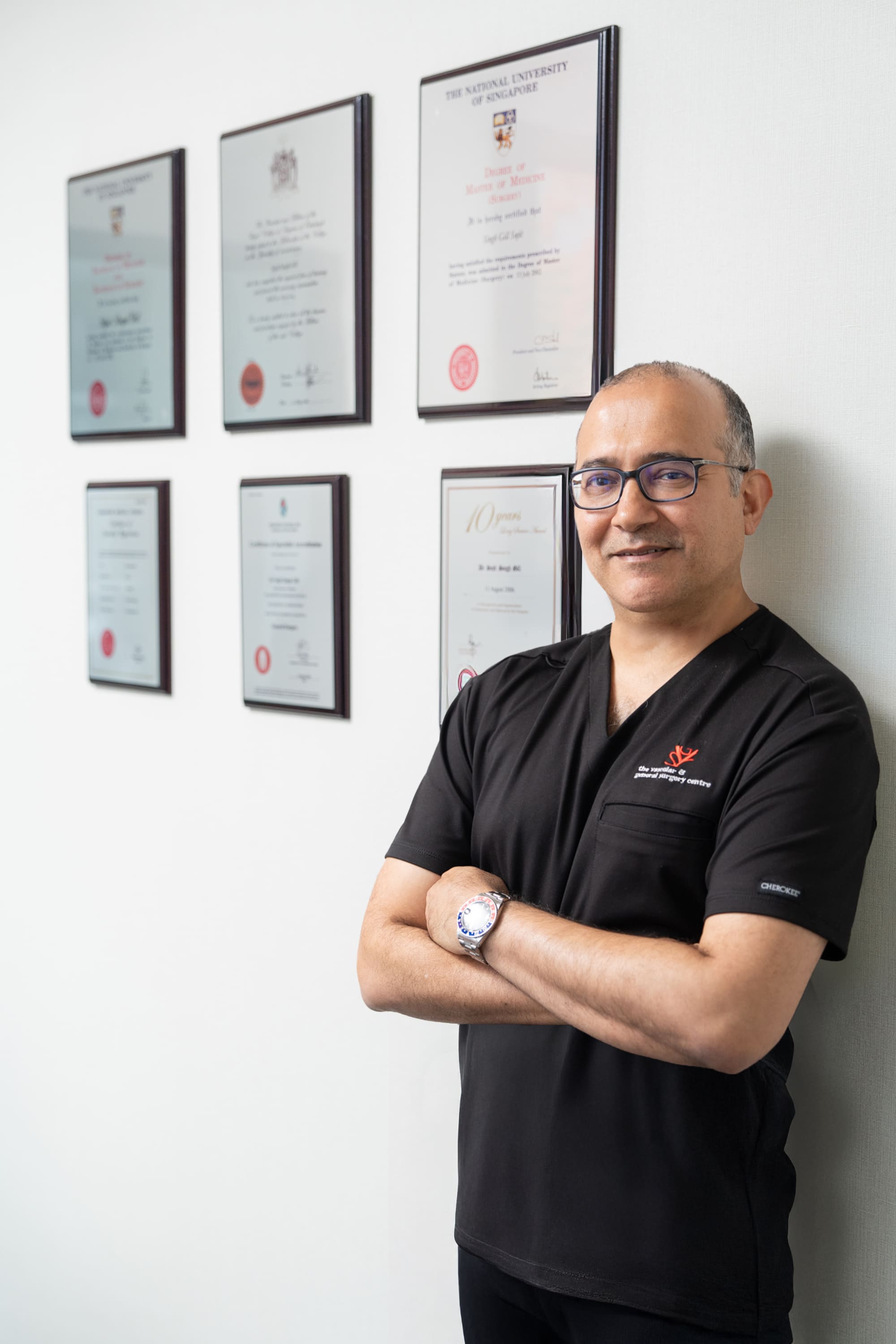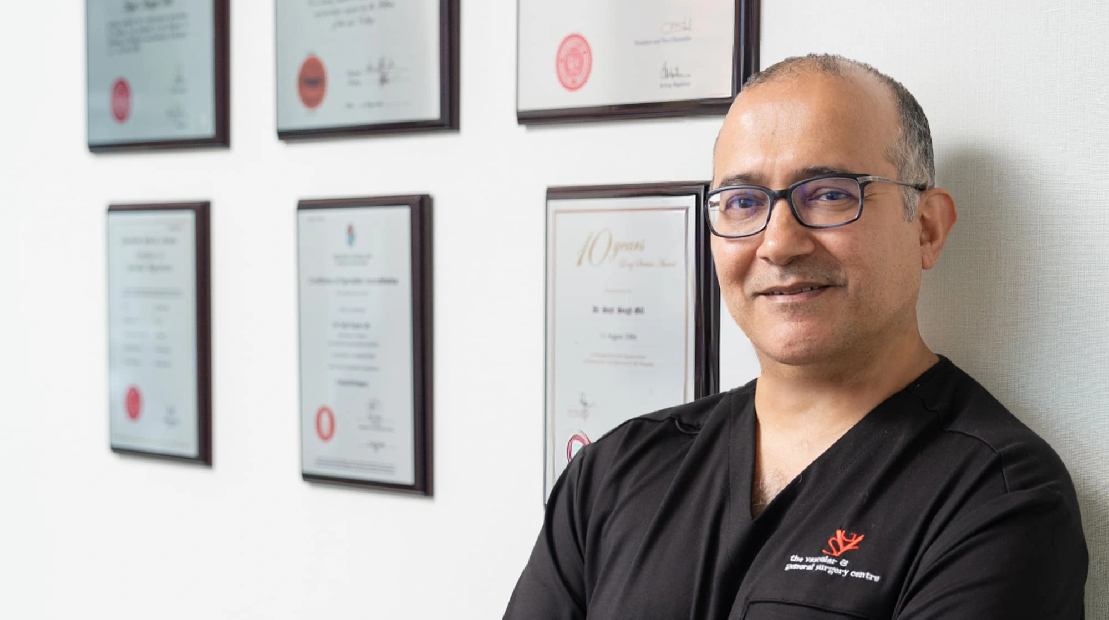
For a consultation, please contact us at +65 6736 2302 or fill up the form below and we will get back to you as soon as possible

For a consultation, please contact us at +65 6736 2302 or fill up the form below and we will get back to you as soon as possible

Dr Sujit Singh Gill
Consultant Vascular & General Surgeon
MBBS (Singapore), MMed (Singapore), FRCS (Edinburgh)
Spider veins, medically known as telangiectasias, are small, dilated blood vessels that appear just beneath the skin’s surface. They often present as red, blue, or purple lines, resembling a spider web or tree branches.
Unlike larger varicose veins, which may protrude, spider veins are usually less than 1 mm in diameter and are primarily a cosmetic concern. Some patients may experience mild symptoms, such as itching, burning, or a sense of heaviness.
Spider veins affect around half of women and become more common with age. Hormonal changes during puberty, pregnancy, or menopause increase their prevalence in women. While generally harmless, spider veins can occasionally indicate underlying venous insufficiency, warranting further evaluation.
Spider veins are visible just beneath the skin's surface, most often found on several areas, such as:
The primary sign of spider veins is their visible appearance as thin, web-like patterns on the skin. Most individuals experience no symptoms, but some may notice:
While these symptoms are typically mild, they can impact quality of life, prompting many to seek spider vein treatment for both cosmetic and comfort reasons.
Additional risk factors include:
Spider veins themselves rarely cause serious health problems, and complications are generally uncommon. However, when spider veins are associated with more severe venous conditions like varicose veins or chronic venous insufficiency (CVI), several complications can arise:
Diagnosis generally involves a physical examination and review of your medical history. A healthcare provider will visually inspect affected areas, usually the legs or face, and ask about symptoms, risk factors, and family history.
Additional tests may also be performed, such as:
A painless, noninvasive ultrasound that assesses vein valve function, blood flow, vein structure, and detects blood clots. This helps map the venous system and guides treatment planning.
In rare or complex cases, contrast venography or magnetic resonance venography may be used to further assess venous anatomy and function.
Spider veins can often be prevented or their progression slowed by adopting several lifestyle habits and protective measures:
At The Vascular and General Surgery Centre, we offer advanced, minimally invasive treatments tailored to each patient’s needs. Our spider vein treatments in Singapore include:
Our clinic is led by Dr Sujit Singh Gill, an experienced varicose veins and vascular surgeon. As the Medical Director and Consultant Surgeon at The Vascular and General Surgery Centre in Singapore, Dr Gill specialises in minimally invasive vascular treatments, and providing expert care for both cosmetic and medical concerns.
Spider veins are superficial and rarely burst. If a rupture occurs, it may cause minor bleeding, which can typically be controlled with pressure. However, this is uncommon, and any unusual symptoms should prompt a consultation with a healthcare provider to rule out underlying issues.
Spider veins may return after treatment if the underlying cause is not addressed. Lifestyle changes and proper skin care can help prevent the recurrence of spider veins. Regular follow-ups with a vein specialist can also help monitor any potential recurrence and provide timely treatment.
Varicose veins are larger, bulging, and may cause pain or swelling, while spider veins are smaller and typically flat. Both involve poor vein function.
No, spider veins do not disappear without treatment. However, lifestyle changes can help prevent new ones from forming.


Dr Sujit Singh Gill is the medical director and consultant surgeon at The Vascular and General Surgery Centre, providing dedicated and evidence-based care for patients with various vascular and other conditions in Singapore. His expertise lies in peripheral arterial disease, varicose veins, diabetic vascular complications, hernia repair, gastroscopy, and colonoscopy. With his advanced training and a patient-focused approach, Dr Gill ensures that his patients receive effective, tailored treatments for better outcomes.
More About Dr Gill
The Vascular & General Surgery Centre
Unit 18-05, Paragon Medical Suites, 290 Orchard Road, Singapore 238859
Tel: +65 6736 2302
Fax: +65 6736 4186
Whatsapp : +65 8866 7837
Email: enquiry@tvgsc.sg
24-hour Answering Service : +65 6535 8833
Blog
NEED ASSISTANCE
Have a question or wish to
make an appointment?
We're here to help.